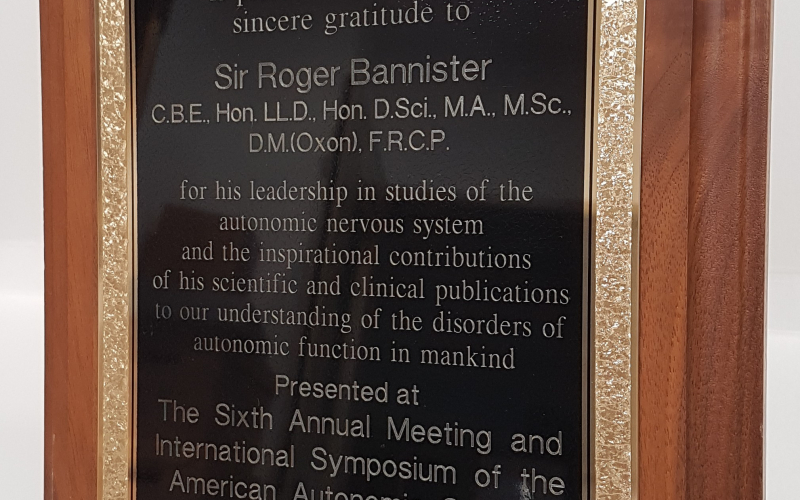#28 Sir Roger Bannister
This scientist might surprise you, if you only know him from his sporting achievements. Last month, we celebrated the 70th anniversary of the first sub-four-minute mile with the Bannister Miles event. But in an interview in 2014, it was science that came first:
"I'd rather be remembered for my work in neurology than my running. If you offered me the chance to make a great breakthrough in the study of the autonomic nerve system, I'd take that over the four minute mile right away. I worked in medicine for sixty years. I ran for about eight."
As the mile run had already had so much celebration in 2024, we wanted to highlight Sir Roger Bannister's contributions to science, using this plaque that you can see on display in Pembroke today.
1. The plaque is from the American Autonomic Society, and was given to Sir Roger Bannister in recognition of his scientific achievements in 1995.
2. Sir Roger was Master of Pembroke from 1985 to 1993.
3. He studied medicine at St Mary's in London, and Exeter College, Oxford.
4. He served his National Service in the Royal Army Medical Core, before returning to study medicine again.
5. His specialism was neurology, focussing on the autonomic nervous system. He was highly respected in his field, receiving numerous awards and medals for his work.
6. During his career, he published more than 80 papers, working on areas such as cardiovascular and multiple system atrophy.
7. His book, Brain and Bannister's Clinical Neurology reached 5 editions.
8. Sir Roger died in 2018. There is a plaque to his memory in Westminster Abey, in the area known as 'Scientists' corner'. It describes him as 'Pioneering neurologist, world champion runner'.
9. He married Moyra Jacobsson in 1955, and they had four children.
10. Pembroke has a case of memorabilia relating to Sir Roger in the Sports Lobby of the Henderson Building. It includes some medals, trophies, and the stopwatch that was used to time the famous mile.

